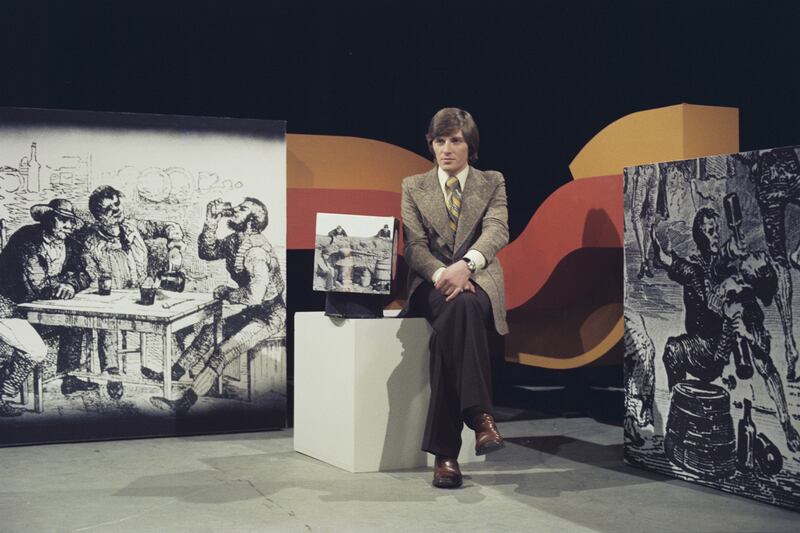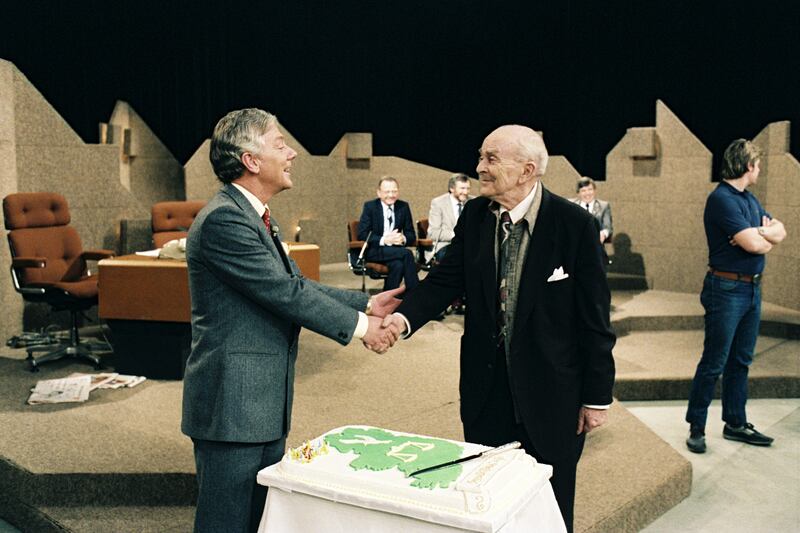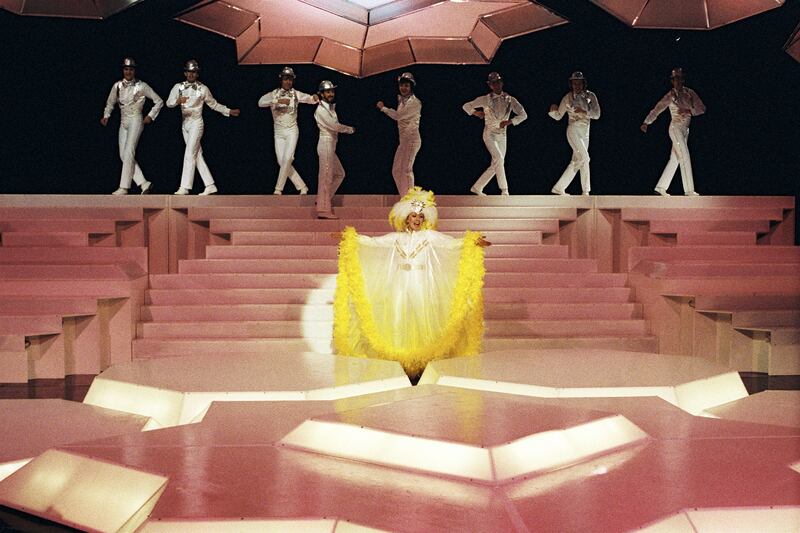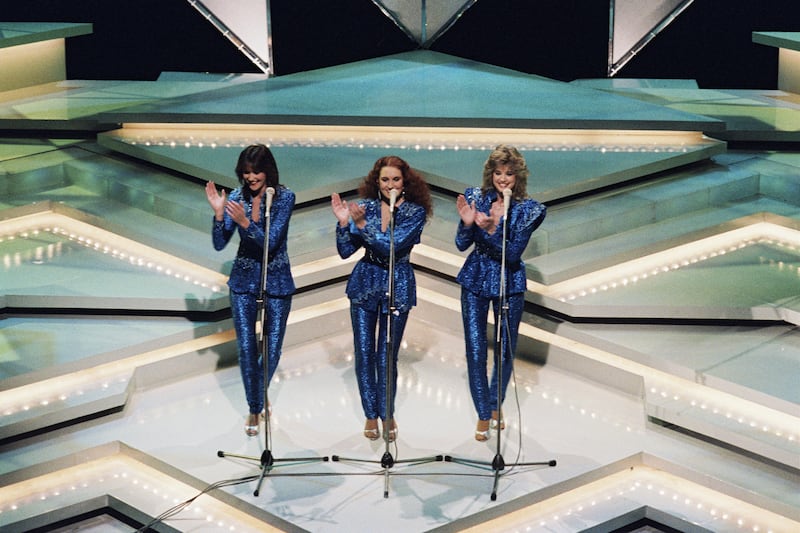In 1976, during a transition from black-and-white programming into recurring colour broadcasts, the bustling design department at RTÉ were tasked with new ways of seeing and representing the world.
Among their ranks was Charles Self, an imaginative designer from Scotland. Legendarily outgoing, he became a familiar face in Dublin’s gay nightlife, moving in the same circles as well-known figures from Irish media such as his friend Vincent Hanley.
While immensely personable and grounded, his personal flair veered left field: to driving a canary-yellow sports car with a patriotic “ECOSSE” sticker; to holidaying in faraway places such as Thailand, and bringing his friends home cigarettes that theatrically light up such as sparklers; to wearing an attractive lapel brooch refashioned from an Anadin box. Self’s perspective on the world was wide, and he filtered it through his own flamboyantly style.
His creativity has rarely been remembered since horrific events that occurred 41 years ago this week. On the morning of January 21st, 1982, Self was found at the bottom of his stairs, having been stabbed 14 times. A man accompanied him home the night before. The murderer remains unidentified to this day.
RM Block
Complicating the brutal incident was an investigation that left many in the gay community cynical – at a time when homosexuality was illegal. Widespread allegations of police harassment signalled a climate of fear and terror that could imaginably impede the case. (Five years ago, in a fresh appeal for information, Gardaí distinguished 2017 from a “different Ireland” of 1982).
[ Murder in Monkstown: the brutal killing of Charles SelfOpens in new window ]
The cataclysmic sequence of events seems to have eclipsed much retrospective thought about Self’s artistry. Archival materials show that back in 1976, he was an intrepid designer at the dawn of Ireland’s colour television era. RTÉ's design department had been tasked with bringing productions into line with standards for colour broadcast, and a good balance had been difficult to achieve, with some early telecasts coming across as brightly excessive to the point of being garish.
Arguably, one early success was the current affairs programme Survey – an ancestor to the network staple Prime Time that explored public attitudes to issues such as politics and alcohol consumption.
Archival photographs reveal how Self, in a time before LED screens, presented graphs and illustrations via blow-up displays, as part of a set that was heedfully restrained. The only inclusion of colour is a red and yellow band that doesn’t curve but warp – such as the psychedelic art of mid-century youth culture – around the popular 28-year-old presenter Pat Kenny. (Of the broadcasters from the period, Kenny has publicly spoken the most about Self, possibly for the simple reason that the designer made him look good).

“What stands out to me is the restraint,” Alan Farquharson says, looking at the photographs, with the advent of colour television in mind. By the end of the 1970s, Farquharson and several other designers at RTÉ would look at Self as a colleague slightly older in age, with slick fixes for complex design problems.
He smiles amused while reflecting on the designer’s endless social life, and recalls one memorable Saturday afternoon when Self, having been preoccupied elsewhere, arrived into the office to finally begin designing a new set for RTÉ's flagship: The Late Late Show. The deadline was the following Monday. He finished the drawings before the day was out.
That set, first seen in 1981, gave the talkshow an inviting new ambience, with attractive wall lights and plush furniture. Such homey touches left it resembling a kind of livingroom – a mirror, perhaps, to the nation watching at home. The most dramatic element is the back wall, which extends into ascending and descending lines.
“The only concern I have is it could be one foot higher, to get everyone’s head cleanly against the back,” says Patrick Molloy, another one of Self’s colleagues. Despite 40 years, Molloy and others still speak of Self as if he were a contemporary whose designs should be judged against high standards. The low height of the set is something we discuss: for close-up camera shots, the guests’ heads mightn’t be neatly seen against the back wall at points where it dips low.
Farquharson wonders if the low height might be an oversight due to a rushed creative process. “You can only do so much in an afternoon,” he says, with a smile.

The design succeeds in other ways. “What Charlie did is get rid of the hard edge at the top of the set. We were all guilty of that for a while,” says Molloy. Wide shots during those earlier seasons sometimes exposed the upper line of the set as abruptly cut off; Self had the wall extend into the rooftop silhouettes of a nondescript town, giving the impression that the conversations happening on The Late Late Show were taking place in homes all over.
RTÉ's archives reveal a diverse set of demands made on Self in the latter half of the 1970s. For the history programme Irishmen and Irishwomen (1976), he positioned host Ronnie Drew against an arched backing, mindfully painted in muted medieval colours. A sparse drawingroom was created for a 1977 television adaptation of August Bournonville’s ballet La Ventana. A modular set for the arts programme Studio 2 (1978) suggests a more assured grasp on designing for colour television, with music artists such as the Boomtown Rats stationed on raised stages painted Ferrari-red with yellow stripes.
While there doesn’t seem to be a pre-existing list of design credits, Self’s colleagues have helped identify his creations – some of them, as junior members of the department, were charged with installing his designs, a task known in-house as “servicing” a set. Ray Ball worked as Self’s assistant, and recalls “servicing” his set for Public Account (1981), another current affairs programme with Pat Kenny at the helm. Behind the host’s desk were wall panels resembling graph paper – giving the impression of a programme literally taking note, but with sophisticated finishes. “There were lighting pieces projecting out, such as the ones on the Late Late Show set,” Ball says.
Not every production has left a trace. Farquharson “serviced” Self’s set for a magazine show called PM (1978), and insists it was his best creation. “It was very dynamic. There were columns that, before they hit the floor, curve and split to create different sections. It looked amazing because you could get camera shots with the columns coming towards you,” he says. Photographs and footage of the design have been difficult to uncover.
The last design that Self oversaw was a set for a programme aired on Christmas Day 1981: the Twink Christmas Special, a variety show for the ludic entertainer Adele King to try on impressions of Liza Minelli and Shirley Temple, and sing from Broadway musicals such as South Pacific.

When asked to look at photos of Self’s flexible set, his colleague Paula Farrell sees a reference to the musical films of Busby Berkeley, which were often populated by dancers escaping down sculpted staircases into opulent worlds of geometrically-perfect splendour. Self had built a jewellike underworld of coral pink, and carved out of it gigantic octagonal and star structures.
He may have never taken Farrell and the other young designers under his arm as a mentor, but they seemed to gain in conviction from simply seeing him in motion. “When you are a young designer, you are very tentative. Seeing that work confidence is hugely reassuring. He made us all better designers,” she says.

Farquharson remembers that Self had completed the designs for the 1982 National Song Contest before he was murdered. A live competition determining Ireland’s entry to the Eurovision, it aired two months after Self’s death, and saw the Berkeleyesque underworld cooled into an aqua green. The neat octagon and star shapes had evolved into complex polygonal triangles, as if the designer were moving in new directions. (Ray Ball speculates that if Self had lived, he would have designed one of the Eurovision broadcasts presented by RTÉ in the 1990s: “He would have been the top designer in terms of being considered as having a sense of style”).
That night in March 1982, The Duskeys were voted to represent Ireland at Eurovision. Linda Martin left the showband Chips after placing last, and embarked on a solo career. Gay men sat at home, afraid of being harassed by gardaí investigating the Charles Self murder. Time was moving fast towards a destination uncertain, and nowhere could anyone turn a corner, escape down a jewel-pink staircase, and get away from it all.


















